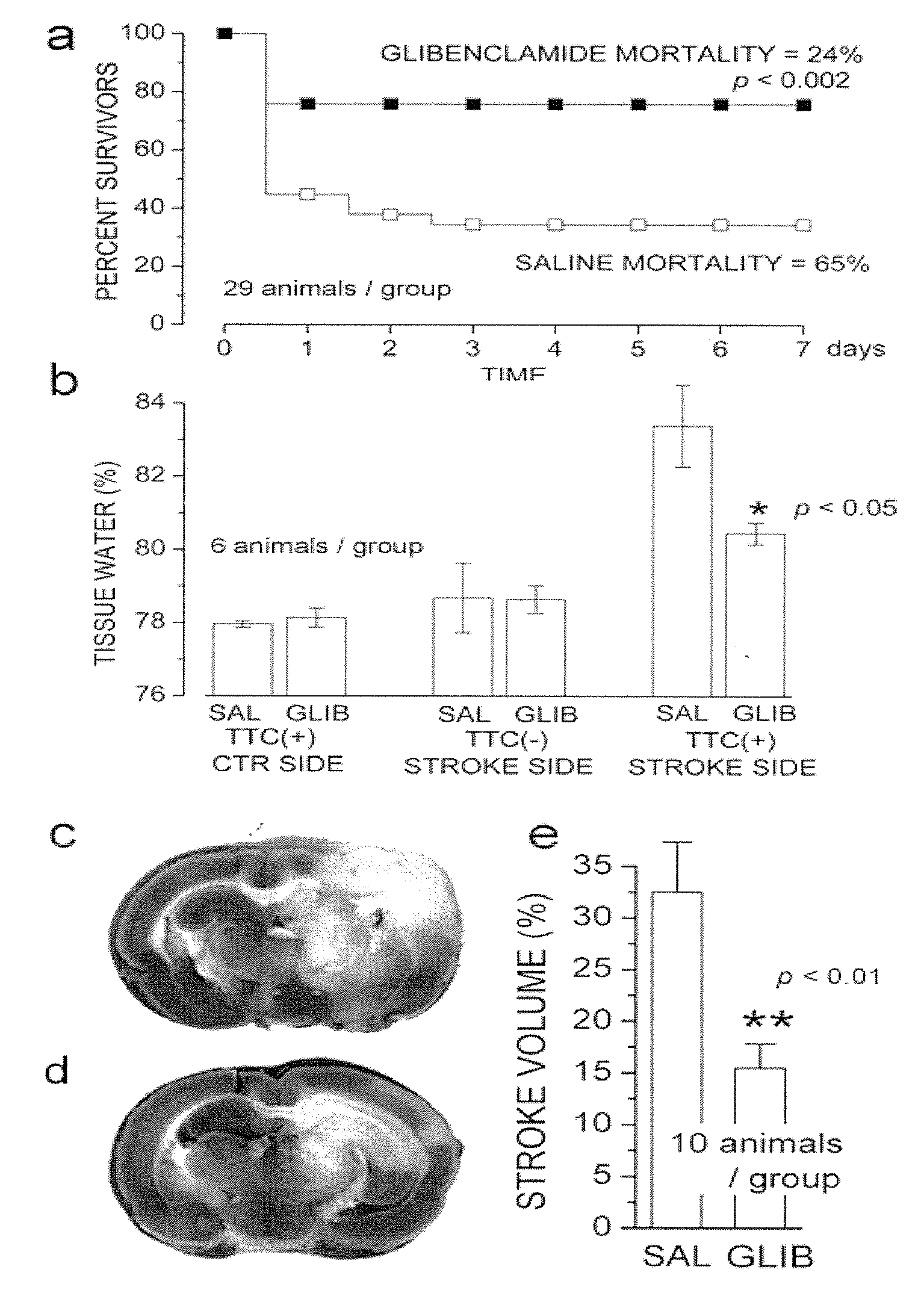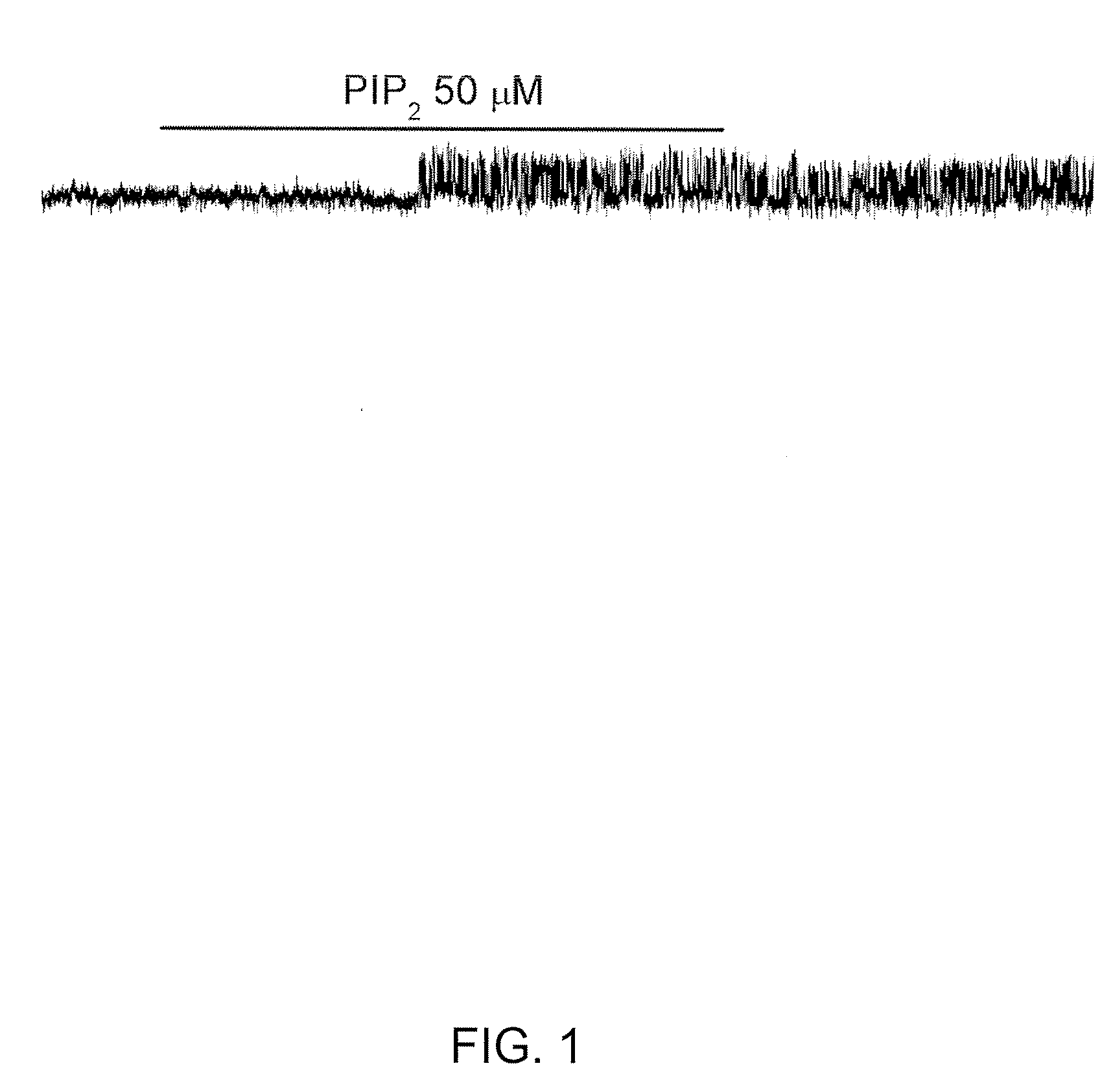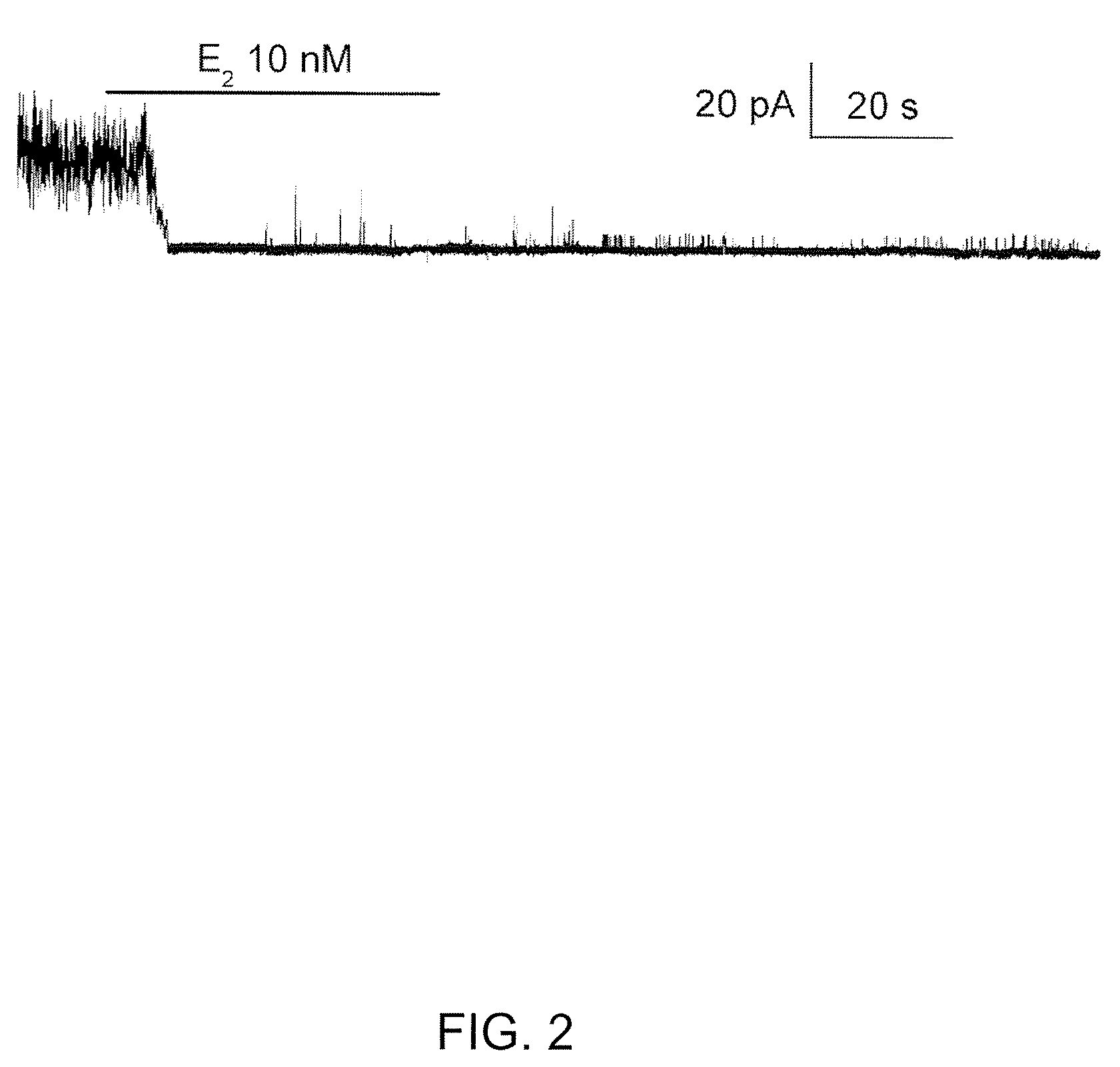Therapeutic Agents Targeting the NCCA-ATP Channel and Methods of Use Thereof
a technology of ncca-atp channel and therapeutic agent, applied in the field of cell biology, physiology and medicine, can solve the problems of brain metastasis, brain swelling, and potentially harmful tissue mass, and achieve the effects of reducing stroke size, reducing mortality of subjects, and reducing edema
- Summary
- Abstract
- Description
- Claims
- Application Information
AI Technical Summary
Benefits of technology
Problems solved by technology
Method used
Image
Examples
example 1
Modulation by Estrogen
[0307]A characteristic feature of KATP channels (Kir6.1, Kir6.2) is that channel affinity for ATP is modulated by the presence of the membrane lipid, PIP2. The open-state stability of KATP channels is increased by application of PIP2 to the cytoplasmic side of the membrane (Ashcroft, 1998; Baukrowitz et al., 1998; Rohacs et al., 1999). An increase in the open-state stability is manifested as an increase in the channel open probability in the absence of ATP, and in a corresponding decrease in sensitivity to inhibition by ATP (Enkvetchakul et al., 2000; Haruna et al., 2000; Koster et al., 1999; and Larsson et al., 2000).
[0308]Given the numerous similarities between the KATP channel and the NCCa-ATP channel, the inventors postulated that ATP-sensitivity of the NCCa-ATP channel would respond to PIP2 in the same way. This was tested by studying NCCa-ATP channels in inside out patches with Cs+ as the charge carrier, and with 1 μM Ca2+ and 10 μM ATP in the bath, with ...
example 2
The Gliotic Capsule
[0314]The standard model involved placing a stab injury into the parietal lobe of an anesthetized rat and implanting a sterile foreign body (gelatin sponge; Gelfoam®) into the stab wound. Variants of the standard model included impregnating the sponge with a substance (e.g., lipopolysaccharide, LPS) or infusing a substance continuously in vivo using an osmotic mini-pump with the delivery catheter placed directly into the sponge. The injury procedure was well tolerated by the animals, with virtually no morbidity or mortality and minimal pain. After an appropriate time in vivo, the whole brain was harvested for histological or immunohistochemical study of tissue sections. Alternatively, if the sponge itself was gently removed from the brain, the inner zone of the gliotic capsule adheres to the sponge and was excised along with it. Thus, the sponge was assayed for protein (e.g., Western) or mRNA (RT-PCR), or it was enzymatically dissociated to yield constituent cells...
example 3
Isolation of Cells from the Gliotic Capsule
[0316]Phase contrast microscopy of cells freshly isolated by papain digestion of the inner zone of the gliotic capsule and gelatin sponge revealed three types of cells. Most of the cells (>90%) were large, round, have no cell processes and were phase-bright (FIG. 6A). A number of cells (3-5%) were small, round, have no cell processes and were phase-dark (FIG. 6B). Occasionally, a cell was found that was intermediate in size, was phase-bright and had multiple processes that were more than one cell diameter in length (Chen et al., 2003). Immunofluorescence study showed that all of these cells were strongly positive for typical astrocyte markers, including GFAP (FIG. 6C,D) and vimentin (FIG. 6E,F). Microglia were not prominent in the inner zone of the gliotic capsule itself, as indicated by sparse labeling for OX-42. Cells of the inner zone of the gliotic capsule were negative for the O2A progenitor marker, A2B5, and the fibroblast marker, pro...
PUM
| Property | Measurement | Unit |
|---|---|---|
| single-channel conductance | aaaaa | aaaaa |
| single-channel conductance | aaaaa | aaaaa |
| conductance | aaaaa | aaaaa |
Abstract
Description
Claims
Application Information
 Login to View More
Login to View More - R&D
- Intellectual Property
- Life Sciences
- Materials
- Tech Scout
- Unparalleled Data Quality
- Higher Quality Content
- 60% Fewer Hallucinations
Browse by: Latest US Patents, China's latest patents, Technical Efficacy Thesaurus, Application Domain, Technology Topic, Popular Technical Reports.
© 2025 PatSnap. All rights reserved.Legal|Privacy policy|Modern Slavery Act Transparency Statement|Sitemap|About US| Contact US: help@patsnap.com



